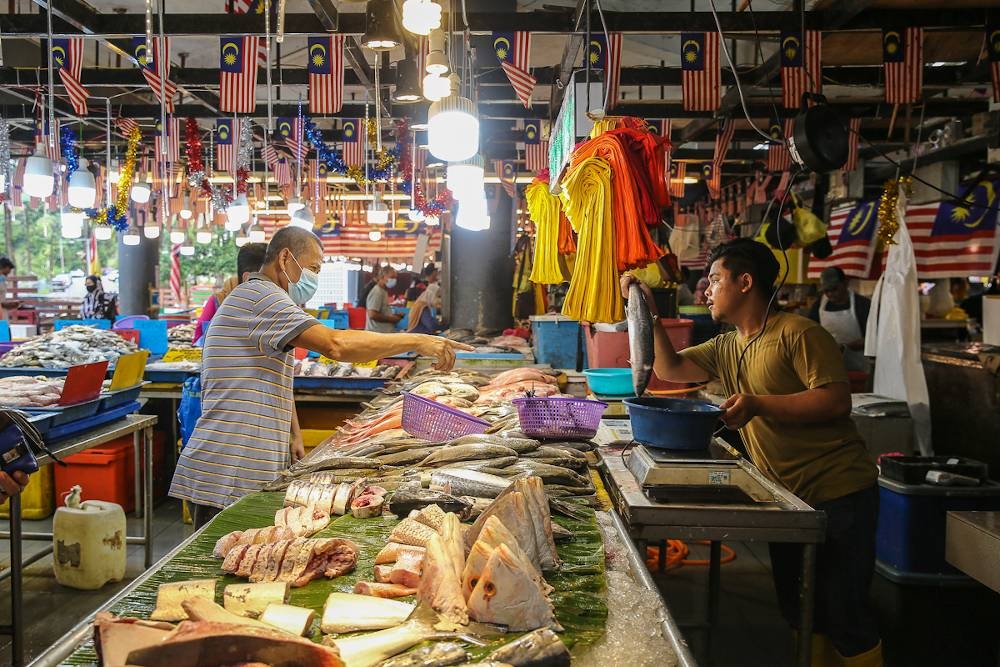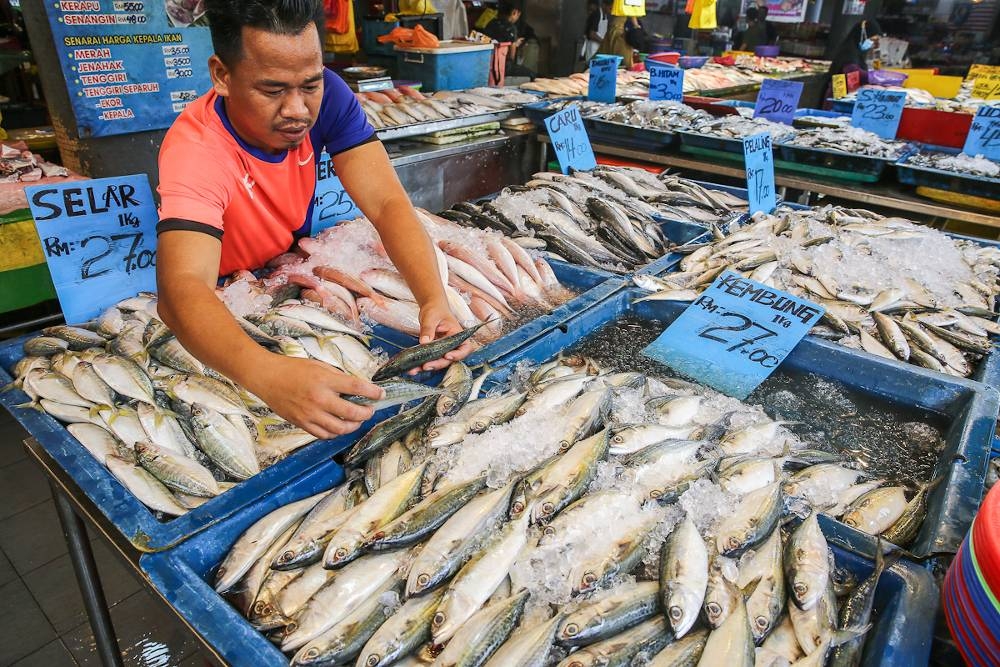KUALA LUMPUR, Sept 12 — The Indian mackerel, also known locally as ikan kembung, is one of the most beloved fish of Malaysians.
The stout, torpedo-shaped fish is so popular it has earned the nickname ikan rakyat, meaning “fish of the people.” In a typical wet market, Indian mackerels sell quickly but the climate crisis might make it harder to get hold of these slippery fish.
Fish and the climate crisis are in a constant tango of cause and effect. Scientists say that the impact of climate change — extreme temperatures, higher levels of carbon dioxide, ocean acidification, sea level rise — jeopardise the quality and quantity of our food supplies.
A recent study published in science journal Global Change Biology in April found that 45 per cent of the world’s fish stocks are expected to shift from their typical habitat and stray from their regular migration paths by 2100 because of climate change.
The same study found that 82 per cent of the exclusive economic zone (EEZ) — the area within 370 kilometres of a country’s coast where it has exclusive fishing rights — waters would experience at least one shifting stock.
This isn’t some far off issue that can be deliberated for decades more. In fact, it is already happening in Malaysian waters.
Fish know no borders
Fisheries and oceanography expert Dr Yeny Nadira Kamaruzzaman and her colleagues predicted in a 2021 study published in Sains Malaysiana that fluctuating weather conditions could cause Indian mackerels to move beyond the borders of the EEZ.
What is driving Indian mackerels away from their usual swimming grounds? The scientists say rising sea temperatures is the cause.
The Indian mackerel is generally found in open coastal waters and best thrives in temperatures between 29°C to 32°C.
As the ocean warms up, fish are on the move. Fish know no borders and move beyond international waters as they please. Anywhere that the sea conditions are favourable, the fish go.
“Sea surface temperature is one of the vital environmental parameters that helps to determine the relationship between oceanographic conditions with fish distribution,” Dr Yeny said.
She explained that different marine organisms have different levels of tolerance for temperature. A 1°C temperature difference can drive some fish away from the areas where they are typically found.
“Most tropical marine fish have an extensive latitude range capable of further extending the temperature gradient up to 3 to 4°C. Therefore, it is important to understand the relationship between fish distribution with its environment in order to identify a favourable habitat for fisheries stock management,” Dr Yeny said.
The marine biologist notes that climate change has affected sea surface temperatures, pH levels in the water and even rainfall and wind patterns.
These changes, in turn, have caused a cascading reaction in how organisms live and interact with their habitats.
Eventually, these effects will be felt by the fisheries industry.
“Climate change will cause an increase in sea surface temperature and it will affect the distribution and abundance of fish populations. The most significant impact of elevated temperature on the fish population is in the change in their distribution pattern,” she said.

Fewer fish could affect food, regional security
For something that generates half of the oxygen we need and that absorbs 25 per cent of all carbon dioxide emissions, the ocean bears the brunt of climate impacts.
“We know that due to anthropogenic activities, a lot of heat trapping greenhouse gas emissions (GHG) is released into the atmosphere. This warms up our Earth,” Dr Renard Siew, a climate change specialist said.
“Approximately one per cent of all that trapped heat has stayed in the atmosphere, but it’s had a huge effect over the past two centuries,” he said.
Oceans are the Earth’s largest carbon sink. This means that any excess heat trapped by GHG is absorbed by the sea — proving itself to be a vital buffer against the impacts of the climate crisis.
Today, the oceans have absorbed much of the heat released. “Since the early 1970s, the oceans have absorbed 90 per cent of all the excess heat trapped by GHG,” Dr Siew said.
Dr Yeny’s study found that during the north-east monsoon season from the months of December to March in 2018, a 1.8°C increase in sea surface temperature actually increased the potential fishing grounds of the Indian mackerel. The same happened when temperatures increased to 2.6°C.
But when temperatures increased by 3.3°C, the potential fishing grounds for the fast swimmers reduced.
On the other hand, during the months of April to November, the population of Indian mackerel dwindled no matter how much the temperature increased.
“This is because the Indian mackerel is a migratory species, so it has the capacity to adapt quickly to environmental changes,” Dr Yeny said.
“[Indian mackerels] are predicted to thrive along with climate change although it has a tendency to change its migratory patterns according to the feeding and spawning areas,” she said.
Local fishermen have previously reported an estimated decline of up to 70 per cent in fish sightings, especially in the northern waters of West Malaysia.
Although the fishermen attributed their emptier nets to overfishing, it is coupled with the impact of climate change that have hindered them from an abundant catch.
Moreover, the lack of fish has also been driving up prices in local markets. According to them, mackerels that were previously sold at RM3 to RM4 for a kilogramme now cost RM12 to RM14.
As Indian mackerel populations found in Malaysia’s waters dwindle, Dr Yeny warned that the change in fish stocks could lead to further disputes in the EEZ.
“Under climate change scenarios, Malaysia might face unstable fisheries supply and food insecurity,” said the scientist, who is also a lecturer at the Faculty of Fisheries and Food Science in Universiti Malaysia Terengganu.

An ‘all-of-society’ problem
Dr Yeny said that fish stocks are under threat from an inevitable climate change, the effects of which can only be mitigated.
“We cannot stop climate change from happening. But what we can do is to help slow it down,” she said.
Tackling the climate crisis is one of the biggest challenges of today. It is a task that requires all hands on deck, but scientists remain hopeful that climate impacts can be reduced.
“Regulators can play a part in championing policies that are more environmentally friendly such as introducing a carbon tax or enacting a climate change act mandating urgent actions to address the impacts of this crisis,” Dr Siew said.
“To address climate change, we need a whole of government, all-of-society approach,” he said.
Keeping the “fish of the people” on Malaysians’ plates, it turns out, will need the help of all of the people.
* This article is supported by Earth Journalism Network (EJN) and Climate Tracker.






















